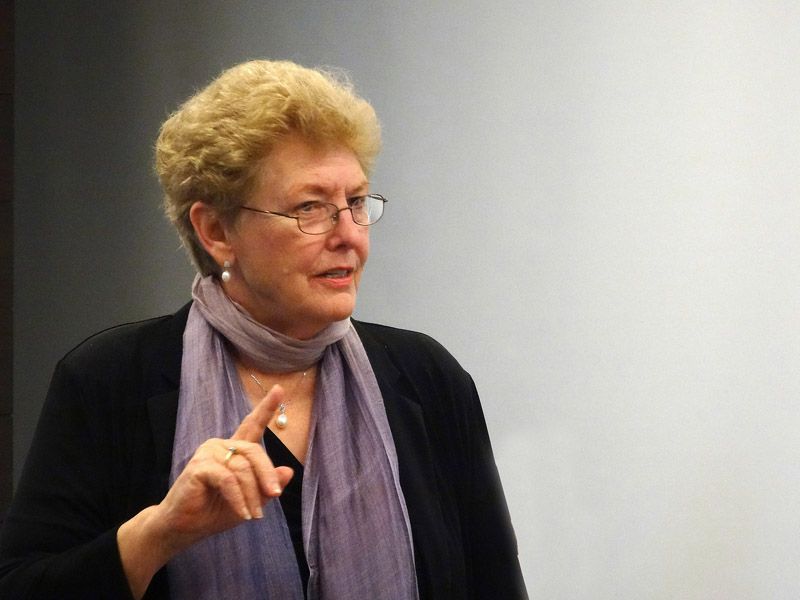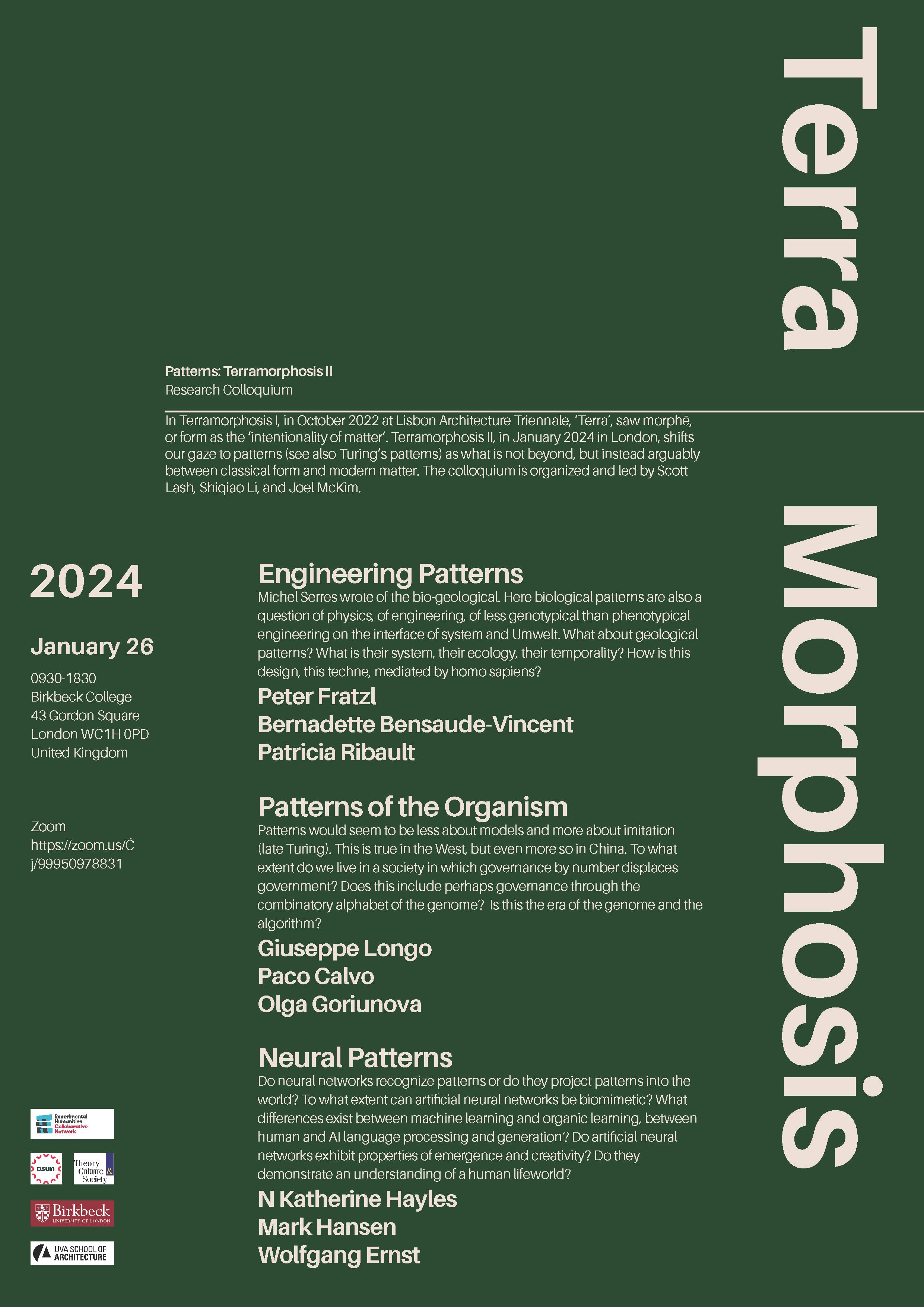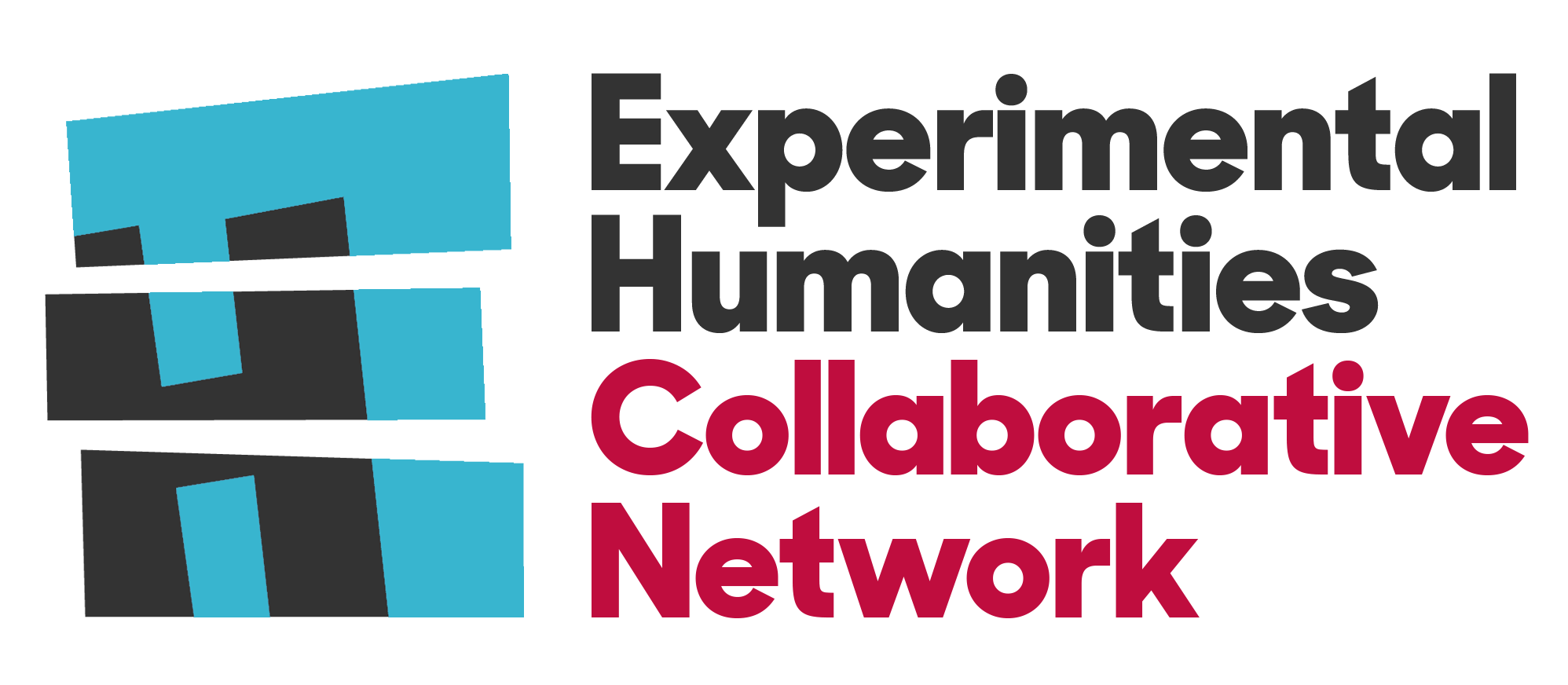Welcome to The Experimental Humanities Collaborative Network
Terramorphosis II: Patterns EHCN Symposium
Birkbeck College
43 Gordon Square
London WO1H OPD
United Kingdom
Terramorphosis II: Patterns EHCN Symposium
This day-long Experimental Humanities Collaborative Network event will explore the intersection of the biological, the geological, and the digital. Through concepts of morphogenesis (the biological development of form) and pattern formation, the symposium will invite a cross-disciplinary group of scholars to discuss overlapping histories and theories of computation, materiality, and information in both Western and non-Western contexts. The symposium will consider forms of life, intelligence and communication that extend beyond fixed boundaries of the human, the organic, and the machinic. It will explore questions of biological and computation neural networks; human and plant communication; geological and architectural structures; ecological and social systems.
The event brings together leading scholars in the Digital Humanities (N. Katherine Hayles, Wolfgang Ernst, Mark B. N. Hansen); the Sciences (Peter Fratzl, Bernadette Bensaude-Vincent, Giuseppe Longo, Paco Calvo) and Art and Design Theory (Olga Goriunova, Patricia Ribault).
The event will be streamed online at the following address: https://zoom.us/j/99950978831
Engineering Patterns (9:30-12:00 GMT)
Michel Serres wrote of the bio-geological. Here biological patterns are also a question of physics, of engineering, of less genotypical than phenotypical engineering on the interface of system and Umwelt. What about geological patterns? What is their system, their ecology, their temporality? How is this design, this techne, mediated by homo sapiens?
Peter Fratzl (Director at the Max Planck Institute of Colloids and Interfaces in Potsdam)
Bernadette Bensaude-Vincent (Professor Emeritus in Philosophy and History of Science at University of Paris 1 Pantheon-Sorbonne)
Patricia Ribault (Professor for Performative Design Research at the Weißensee Kunsthochschule, Berlin)
Patterns of the Organism (13:00-15:30 GMT)
Patterns would seem to be less about models and more about imitation (late Turing). This is true in the West, but even more so in China. To what extent do we live in a society in which governance by number displaces government? Does this include perhaps governance through the combinatory alphabet of the genome? Is this the era of the genome and the algorithm?
Giuseppe Longo (Research Director Emeritus at Centre national de la recherche scientifique at the Cavaillès interdisciplinary center of École Normale Supérieure in Paris.)
Paco Calvo (Professor of the philosophy of science and principal investigator at the Universidad de Murcia's Minimal Intelligence Lab (MINT Lab) in Spain)
Olga Goriunova (Professor Humanities and Arts Research Institute, Royal Hollaway, University of London)
Neural Patterns (16:00-18:30 GMT)
Do neural networks recognize patterns or do they project patterns into the world? To what extent can artificial neural networks be biomimetic? What differences exist between machine learning and organic learning, between human and AI language processing and generation? Do artificial neural networks exhibit properties of emergence and creativity? Do they demonstrate an understanding of a human lifeworld?
N. Katherine Hayles (James B. Duke Distinguished Professor Emerita of Literature, Duke University)
Mark B. N. Hansen (James B. Duke Distinguished Professor of Literature, Duke University)
Wolfgang Ernst (Professor of Media Theories at Humboldt University, Berlin)
The symposium is organized by EHCN member Joel McKim (Birkbeck), Scott Lash (Goldsmiths) and Shiqiao Li (University of Virginia). It is generously funded by OSUN's Experimental Humanities Collaborative Network; the Vasari Research Centre for Art and Technology; Theory, Culture & Society; the University of Virginia School of Architecture; and the Birkbeck Strategic Research Fund.



